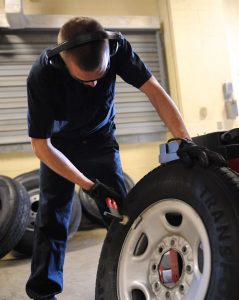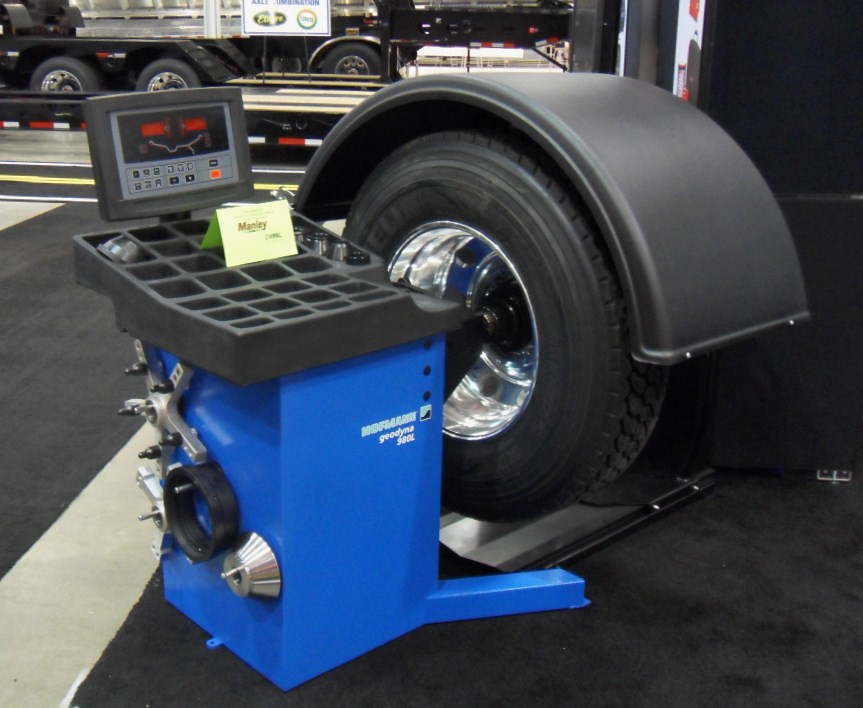Contents
– Wheel balancer: what is it used for?
– Principle of wheel balancing
– Wheel balancer: machines and prices
In an automotive workshop, the wheel balancer is a piece of garage equipment as essential and complementary as the tire machine. Let’s take a look at what it does and how to use it.
What is a wheel balancer used for?
When the mechanic replaces tires, after mounting them on the wheel, he performs wheel balancing.
Wheel balancing is an essential operation because it eliminates vibrations in the wheels that are detrimental to driving comfort, the ball joints, and the trains’ silent-blocks and steering.
The wheel is fixed on a rotating support, and the parameters of the wheel are entered on the device: diameter, wheel offset, tire width, and position of the balancing weights to be applied.
The wheel is then rotated and stopped; at this point, the balancing weights’ position to be placed is displayed, and their weight in grams (one per wheel side).
Good to know: the balancing weights are fixed on the rim by staples or by gluing. Formerly made of lead (forbidden since 2003), they are now made of zinc and copper alloys.
Principle of wheel balancing
The vibrations generated by the wheel are due to the unbalance: the manufacturing defects of the wheels and tires (homogeneity of the material), the shocks and deformations, the weight of the valve can cause an unbalance of weight on the wheel.
When the wheel is put in rotation on the balancing machine, and if it stops by itself, this one will always stop at the same position: this imbalance of weight is the “unbalance.”
Two operations
You can break down the work of the balancing machine into 2 operations:
– static balancing: the role of the balancing machine is to compensate for this unbalance by placing the mass equivalent at the diametrically opposite point;
– dynamic balancing: when the wheel turns, if it is unbalanced, its center of gravity moves with the axis of rotation; the aim is to bring the center of gravity back to the rotation axis by placing a balancing mass.
The machine considers these two parameters, static and dynamic, to determine the location and value of the balancing mass.
Note: If a weight of more than 40 grams is required, make sure that the wheel does not have a significant defect (if it does, have it repaired or replaced). The unbalance at the end of the operation should be 0 to 5 grams maximum.
Preliminary operations before balancing

Before balancing, some preliminary operations must be done:
– Remove the old weights.
– Clean the wheel.
– Visually check for runout and haze:
◦ runout: in rotation, the wheel height varies (this may be due to poor centering of the tire or a defect in the wheel);
◦ sail: in rotation, the wheel runs in the direction of the width (in case of impact to the rim or deteriorated tire).
Wheel balancer: machines and prices
There are several more or less automated machines (prices vary from $600 to $2,000), from the machine with manual settings to the automated machine with a touch screen.
Note: more marginally, there are balancing benches that directly measure the wheel mounted on the vehicle: the advantage is to take into account all the rotating parts (wheel-hub-transmission). This technique is very little used in workshops.
You can read more here:
Understanding wheel alignment and wheel balancing
What is Caster in wheel alignment?
A Complete Guide to Wheel Alignment
Don’t forget to share and comment on this post.


2 comments
[…] distribute the wheels’ weight evenly. The mass is placed with the help of a machine called a wheel balancer when mounting the tire on the […]
[…] What Is a Wheel Balancer Used For? […]